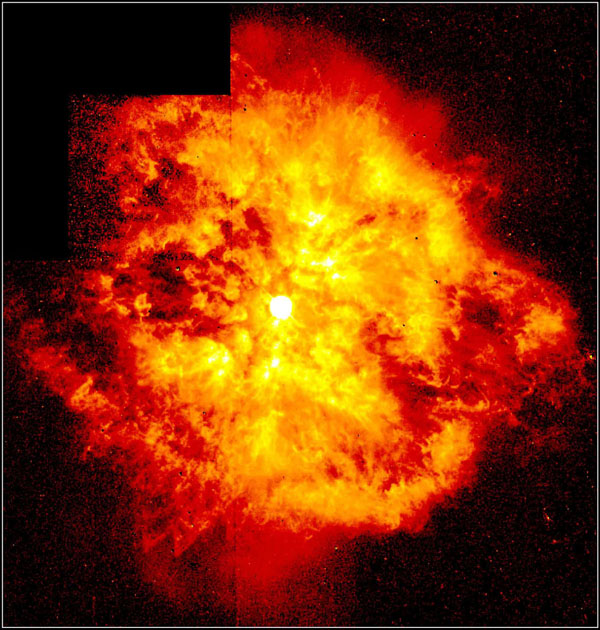There are several alternate models which contradicts Big Bang cosmology. Here we briefly discuss some alternate rival models.
1. de Sitter cosmology (1917)
- It models the universe as spatially flat and neglects ordinary matter. The universe is presumed to be entirely empty of matter.
- The density of matter in the universe is zero.
- Expands exponentially in time because of non-zero cosmological constant.
- Refutes nearly all observational facts now available.
2. Einstein’s static cosmology (1917)
- Einstein’s original cosmological model was a static (universe not expand), homogeneous with spherical geometry.
- The gravitational effect of matter caused an acceleration in this model which Einstein did not want, since at that time universe was not known to be expanding. Thus, Einstein introduced a cosmological constant into his equations of General Relativity. This term counteracts the gravitational pull of matter, and so it has been described as anti-gravity effect.
- The cosmological constant is precisely tuned to balance attractive tendency of matter.
- Like de sitter cosmology, it fails to agree with modern observations.
3. Lemaitre cosmology (1924)
- Universe started with a ‘Big bang’ with no cosmological constant.
- Initial state: Giant radioactive atom containing all the matter in the universe near absolute zero, called super atom.
- Agrees with observed expansion.
- Fails to explain existence of CMB radiation.
- Fails to explain the universal abundances of hydrogen, helium and deuterium because it requires the decay of a single massive ‘super atom’ at the instant of the Big Band.
- Lemaitre was a pioneer in applying Einstein theory of General Relativity to cosmology and predicting Hubble’s law theoretically.
4. Oscillatory Big Bang Cosmology (1930)
- Tolman proposed oscillatory or cyclic model.
- He proposed that universe would expand for a period of time before the gravitational attraction of matter causes it to collapse back in and undergo a bounce.
- Enough matter to make re-collapse expansion phase.
- Current observed expansion will be replaced by a collapse phase.
- No observational evidences.
- New cyclic model is brane cosmology (2001). According to this model, the process of matter to energy conversion in stars is fueling the cosmic expansion according to Mill’s theory.
5. Steady state Cosmology (1950)
- Developed by Fred Hoyle and Thomas Gold.
- Universe has no beginning and no end. In other words, it does not change its appearance over time. However, interestingly, this theory explains the reality of expanding universe.
- They proposed the existence of ‘C-field’, where C stands for creation. The c-field has negative pressure which enables it to drive the steady expansion of the cosmos whilst also creating new matter, keeping the large scale matter density approximately constant.
- According to this theory, new matter is continuously created as the space expands. However the average density of matter remain same over time.
- According to this cosmology, roughly one solar mass of baryons per cubic mega parsec per year is created from the c-field. (roughly one H-atom per cubic meter per billion years)
- New galaxies are created in the intergalactic space.
- Never able to explain Cosmic Microwave Background.
- Fails to explain universal abundance ratio for hydrogen, helium and deuterium.
- Opposed the existence of stellar nucleosynthesis. (PP chain / CNO cycle)
6. Brans-Dicke Cosmology (1955)
- Included a ‘scalar field’ in the Einstein’s field equation.
- This field causes the value of the ‘G’ to change slowly over billions of years.
- Failed to verify the existence of variable G.
7. Cold Big Bang Cosmology (1965)
- Big Bang occured
- Initial state was at absolute zero and consisted of a pure solid of hydrogen.
- This solid hydrogen fragmented into galaxy sized clouds as the universe expanded.
- No explanation of CMB radiation at all.
8. Hegedorn Cosmology (1968)
- Proposed all details of standard Big Bang Cosmology except the limiting temperature of early universe.
- Early temperature was assumed to be 1 trillion degrees.
- The structure of the matter has an infinite ladder of ‘fundamental particles’ out of which electrons, protons and neutrons are constructed.
- Refutes with the discovery that quark exists at nearly 1000 trillion degrees.
9. Big Bang Cosmology with Neutrino families (1970)
- Tried to explain ‘missing’ or ‘dark’ matter problem, new families of neutrinos have to be added to the universe.
- No experimental evidence that more than three types of neutrinos exist.
10. Old inflationary Big Bang Cosmology (1980)
- Developed by Alan Guth
- Inflationary era ended
seconds after the Big Bang.
- Bubbles of true vacuum formed.
- These bubbles merged to the matter and radiation in a very lumpy configuration.
- No evidence for such a turbulent lumpy transition era.






